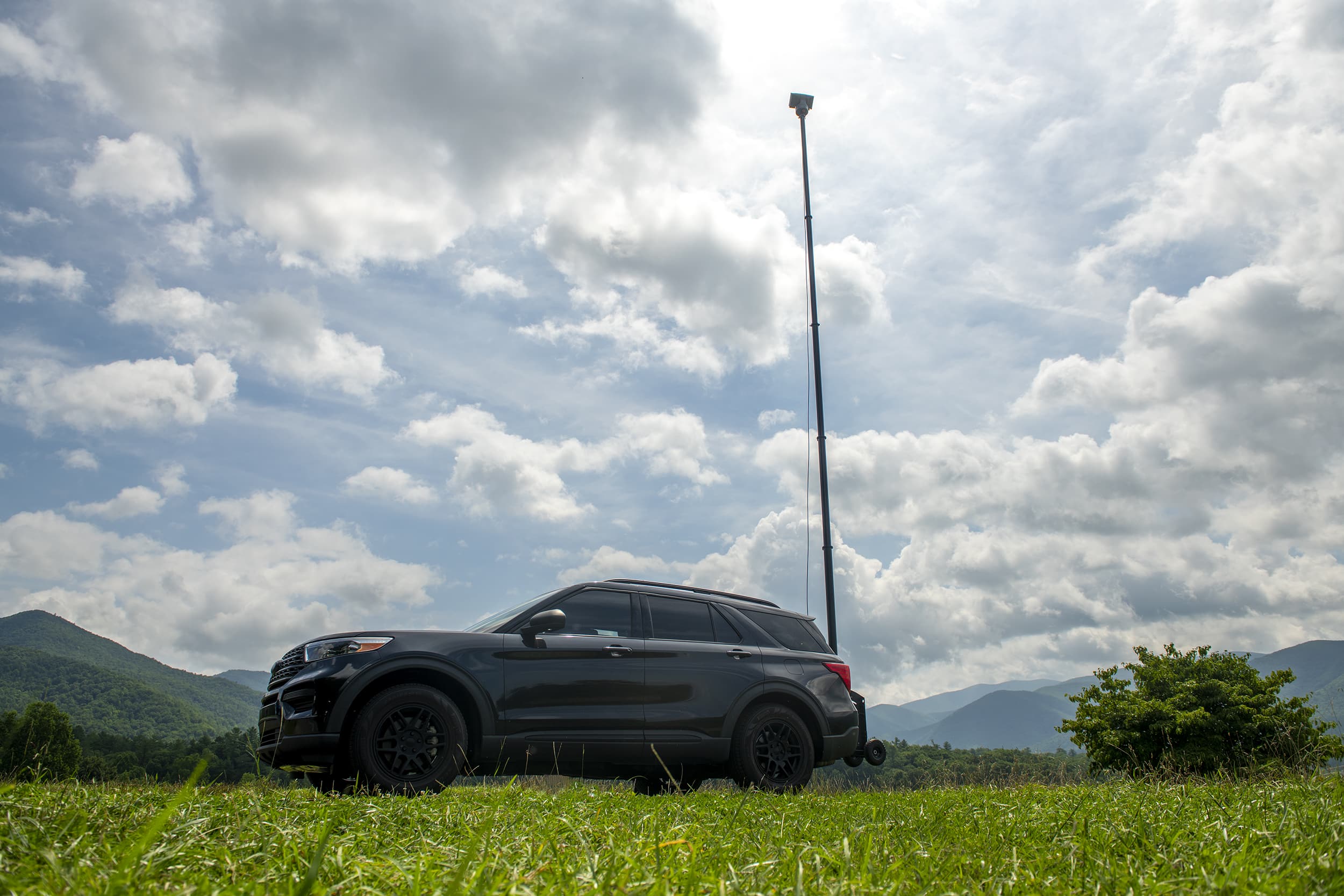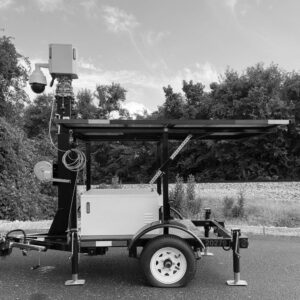Situational Awareness Elevated
Quick-Deploy Tactical Towers for Surveillance, Communications, Lighting & More.
One-Person Setup
Deploy in Minutes
Low Maintenance
Trusted By Our Nation's Finest





















The Easiest + Fastest System For Situational Awareness.

Take your mission to the next level.
Utilizing a telescoping mast or portable tower for special events, critical incidents & real-time surveillance should be at the forefront of your situational awareness priorities; especially if you work in law enforcement, fire, or any other first responder field where seconds count.

The RATT can be deployed in less than half the time of most camera trailers (in a matter of minutes). For you, that means you don’t miss a beat at any special event or critical incident. In an emergency, being able to set up, install, and deploy your portable camera or antenna mast is critical to the success of your operation. After all, you need to have constant coverage and be prepared to hit the ground running when disaster strikes. The RATT enables you to do just that by providing you with a quick-deploy tower that gets you started on the task at hand (calmly).
The RATT takes a single person to roll it to the vehicle and effortlessly connect it to the 2” hitch receiver in under 2 minutes or deploy freestanding on tripod legs. It’s a simple 75-99 lb portable tower to deploy unlike the traditional 2,000 lb+ camera trailer or portable tower. It doesn’t require additional licenses or training to operate, and can be managed by a single person. This lets you put your time to good use and stops you from spending hours setting up equipment. All you need is to set aside 5-10 minutes to get this lightweight pneumatic mast elevated and deployed.
Many mobile video surveillance systems require complex device pairing or upkeep which can not only be expensive, but also time-consuming. In contrast, our portable towers requires a simple wipe down & lubrication of the mast sections 1-2 times annually to keep it operating smoothly. The RATT is a low-maintenance tower that’s ready for law enforcement and first responders to deploy fast without having to worry about additional upkeep and difficulties.
There are plenty of mobile surveillance towers out there, but not many are adaptable to your mission requirements or are multi-purpose tools. With The RATT, we pride ourselves on giving you these field-swappable tools that enable you to succeed in any portable tower rapid deployment requiring elevation, regardless of whether your deployment includes a single-sensor PTZ surveillance camera, 360-degree multisensor with PTZ, security radar, antenna, signal booster or WiFi access point.
Part of what makes The RATT so unique is that it can be used for many missions & applications. Enjoy video analytics for facial recognition, appearance & license plate recognition (LPR). Use a thermal camera to identify hot spots and smoke for firefighting. Take advantage of situational awareness and investigative support with tactical long-range surveillance and public event monitoring. Plus, use our telescoping antenna tower with a mobile repeater, signal booster or for outdoor WiFi.
Many remote surveillance towers require complex maintenance and training to operate, but The RATT eliminates that! The RATT’s telescoping mast requires no FAA waivers to operate at night, nor to operate in crowds or open-air venues. With our quick-deploy tower, no license is needed to operate the machinery and no training is required. This enables you to take the focus off training and implementation and to put your energy instead into what matters – monitoring your mission and deploying your new mobile video surveillance system without a headache.
Setting Up For An Event or Incident Shouldn't Be So... .
Deploying the equipment needed for situational awareness can be complex and time-consuming.
Whether you need an eye-in-the-sky, elevated communications or lighting, the setup + deployment can be complicated which wastes your time + resources.
Our quick-deploy tower elevates cameras, antennas, lighting and more, helping you improve both situational awareness and security fast!
One-Person Deployments Made Simple.

Connect
We believe in providing you with easy-to-use telescoping mast systems, which is why we’ve created a portable tower design that’s simple, easy to operate, and set up. The RATT takes one person less than 10 minutes to connect, set up, and goes anywhere your vehicle with a Class III 2×2” hitch receiver can go.

Elevate
Being able to monitor what’s going on around you requires a strong vantage point. The RATT elevates to 35’ in less than 2 minutes and can be even be used on uneven terrain. That lets you survey the area, make important judgment calls when it matters most, and even extend your radio coverage by mounting an antenna on top.

Deploy
Once your vehicle or tripod mast is in place, it’s a simple process to deploy your system and begin monitoring what’s going on around you. The RATT provides rapid aerial surveillance, day or night. Take advantage of this quick-deploy system that can do mobile video surveillance, boost radio signals, light up a scene & more!
“In 2022, we had a festival that was spread out. The RATT was positioned in the kids zone and gave us overwatch of the entire area. The ability to control the camera remotely was great. The quality is better than anything I have used in the past. We ordered a 2nd system and plan to deploy two RATTs at large special events.”
Commander Chad Koyama @ Clarksville Police Department
Quick-Deploy Towers for Surveillance, Communications & Lighting.
Portable Towers For Any Event or Incident
We provide quick-deploy tactical towers so law enforcement agencies can improve situational awareness fast!
We understand that you want a system that is simple to set up + don’t need your team to be rushed during an incident and jeopardize the mission.
✓ One-person setup
✓ Deploy in 10 minutes or less
✓ Save money on maintenance






FAQ on Telescopic Towers - Applications, Deployment & More
The Rapid All-Terrain Tower (RATT) is a rapid deployment portable telescopic tower system that is primarily used by agencies for special event video surveillance, to fill in camera blind spots and to eliminate RF dead spots. The vehicular version (Hitched-Mounted RATT) attaches to a vehicle’s 2″ hitch receiver in less than 2 minutes, can reach a maximum height of 35 feet, and carry payloads such as cameras, radio (RF) antennas, cellular boosters, and many more devices! There are also different mounts available to attach to a trailer or building wall, on a roof or deploy freestanding on a tripod.
A telescoping or telescopic mast is an upright pole or tower that consists of tubular sections that slide within each other in order to be extended or retracted. Telescopic masts can be made from a variety of materials including steel, aluminum or carbon fiber depending on the application and your mission requirements.
Most RATT mobile surveillance tower systems are manufactured to order and the estimated delivery time ranges from 2-6 weeks from the time of order depending on custom configuration & your mission requirements.
The RATT weighs between 75-105 lbs (with masts under 33’) and can be deployed & operated by one person. There are many telescopic mast options available with varying payload capacities that may require custom mounting, so please contact us with your requirements.
Just about any vehicle that has a 2×2″ square (Class III) hitch receiver can be used. The RATT can also be adapted to suit common receiver types used in other countries. For military applications, a plate mount can be bolted to the standard pintle hitch location on a Humvee, for example.
No, not for normal operation (under 30 MPH for most towers) but guy wires can be added as an option. The RATT is supported by a steel vehicle mount that adjusts the tilt to achieve a vertical orientation prior to elevating. The guy wires are required when winds exceed 30 MPH or for long-range video surveillance.
As with anything elevated and metal, the user must not operate in close proximity to power lines, when lightning is a possibility or under anything overhead. The RATT was designed as a rapid-deployment portable tower for “light-duty” end uses that require elevation. As such, there are limitations with respect to devices, payloads & operating conditions.
Yes, especially when windy. There can be some movement depending on wind speed, payload weight and the mast selected; however, it typically does not affect the usability of the mobile video, nor the recordings. The RATT utilizes an “o-ring” style telescopic mast over other types given that they provide the best-in-class rigidity.
The RATT uses 12 volts DC and a standard cigarette lighter outlet. It can also be purchased with a standard NATO plug for military applications. The RATT can operate with the engine running or with the ignition off depending upon the vehicle. When the engine is running, it has unlimited duration.
The Mobile Video Surveillance (MVS) System was rebranded to The Rapid All-Terrain Tower (RATT) in 2020. The RATT is the next-generation version of the MVS System that introduces more features, payload & end-use options, more structural stability, and enhanced usability on most terrains with improved wheels to conquer different terrain deployments.
50 feet. The RATT ranges in size from 10-50 feet and some versions even have “lockable collars” that restrict the extended height as needed for special applications such as LPR, facial recognition or other AI end uses. There are custom options available beyond 50’ that require a different mount so please contact us with your requirements.
As with other high-strength aluminum pneumatic telescopic mast tower systems, The RATT can be extended pneumatically via the manual mast-mounted hand pump or by using the optional 12v DC electric pump. Either pump will fully extend The RATT within 2-3 minutes and retract within 60 seconds.
The 20-50 foot vantage point allows for unobstructed, longer range video surveillance. Some uses include special event mobile surveillance, viewing upper levels of structures for tactical police use, recording fleeing vehicles in DUI roadblocks, public events, investigative video of crime scenes, accident scenes and all-terrain threat recognition and identification.
No, the pneumatic telescopic mast must be fully retracted prior to driving; however, a mobile surveillance camera or small RF (radio) antenna can be used in the lowered mast position while driving with the additional safety pin engaged. These end uses provide situational awareness (& recording for vehicle convoys) and can also test RF coverage, levels and data speeds.
The RATT vehicle mast, with the payload removed, is around 8-9.5 feet from the ground (6-7.5’ mast plus the height of the vehicle’s hitch from ground level) for masts up to 33’. This provides ample clearance from all roadway hazards except parking garages and/or low-clearance entrances. For comparative purposes, tractor trailers have a maximum height of 13′ 6″ in the United States.
Should you require a shorter retracted height or have specific requirements, we can build a custom pneumatic mast to order. Request a custom pneumatic mast quote today!
This greatly depends on your mission objectives. A telescoping mast has several advantages over a UAV/drone such as no drone pilot required, no FAA licensing, no specialized training, no nighttime FAA waivers required, no risk of crashing the device, unlimited duration, all weather, and a larger camera with better zoom capability. It is also much safer when operating near large crowds and is considered less intrusive than a UAV/drone.
Yes, The RATT’s most popular mobile surveillance towers are cloud-connected and can be configured with many different camera options in custom field-deployable Pelican cases that include custom foam, LTE router with Wi-Fi, 12v DC or 110v power, hand pump and/or electric pump. All cameras are both NDAA/TAA-compliant and ONVIF, meaning they are grant-eligible and can be integrated into over 400 ONVIF Members’ VMS platforms.
You can safely deploy The RATT in the following 4 scenarios: (1) Connect to a vehicle’s Class III 2×2″ hitch receiver, (2) fixed or wall-mounted to a permanent structure’s wall or mobile command vehicle, (3) freestanding on a tripod and lastly (4), on a trailer (tongue, wall or via an “add-a-hitch” solution).









